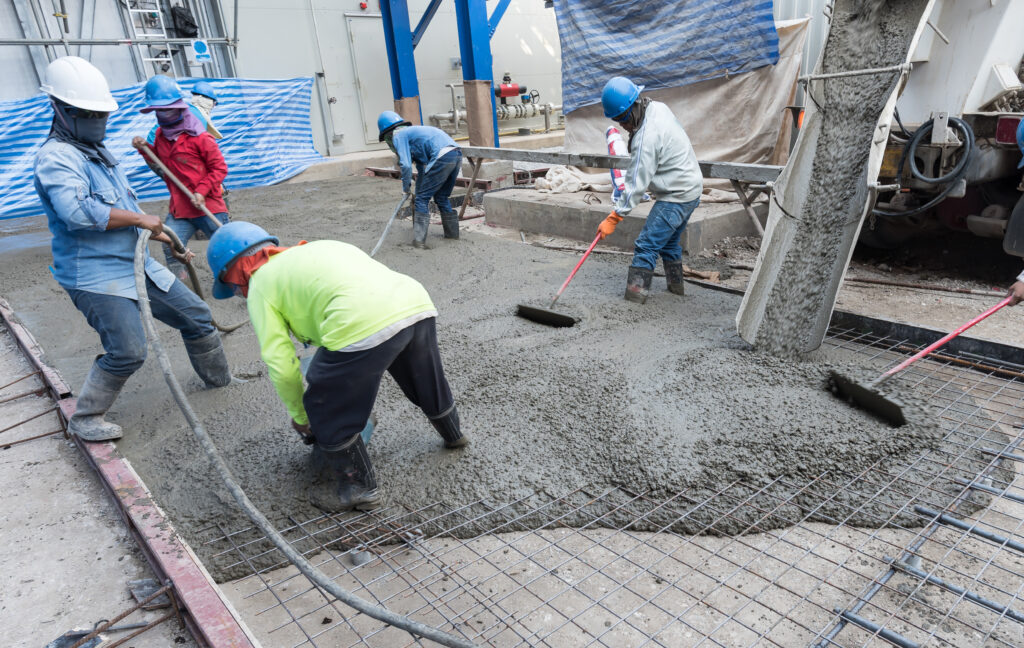South Florida is home to some of the most iconic and vibrant structures, from the skyline of Miami to the beachfront properties of Fort Lauderdale. These buildings, many of which are decades old, represent the region’s growth, economic power, and its commitment to architectural beauty. However, the very elements that make South Florida so desirable—sun, saltwater, and tropical storms—also take a significant toll on concrete structures. Over time, the effects of these harsh environmental conditions can lead to the degradation of concrete, compromising the integrity and safety of buildings. This is where concrete restoration plays a crucial role.
Concrete restoration is the process of repairing, refurbishing, and strengthening existing concrete structures to extend their life cycle, improve safety, and ensure they meet modern standards. In a region like South Florida, which faces unique environmental challenges, concrete restoration has become an essential service for maintaining the beauty and safety of both commercial and residential buildings. In this blog post, we’ll explore the importance of concrete restoration in South Florida, the methods used, and why it’s so critical for the longevity of our buildings.
The Importance of Concrete Restoration in South Florida
South Florida’s climate is harsh on concrete, and over time, even the most well-built structures can show signs of wear. Saltwater from the ocean, high humidity, and intense UV rays from the sun create an environment that accelerates the deterioration of concrete. The most common signs of concrete damage in the region include cracks, spalling (chipping or peeling), and corrosion of reinforcing steel, also known as rebar.
- Saltwater Exposure: Salt is one of the primary causes of concrete deterioration in South Florida. The region’s proximity to the Atlantic Ocean means that concrete structures, particularly those near the water, are frequently exposed to saltwater, which can seep into the pores of the concrete. Over time, salt can cause the steel reinforcement inside the concrete to rust, leading to cracks, spalling, and weakening of the structure.
- High Humidity: South Florida is characterized by its high humidity, which can lead to the growth of mold and mildew on concrete surfaces. This excess moisture can also penetrate the concrete, contributing to its degradation over time. As the concrete absorbs water, the internal structure weakens, leading to further damage.
- UV Radiation: The intense sun exposure in South Florida also plays a role in concrete deterioration. Over time, ultraviolet (UV) radiation breaks down the surface of concrete, causing it to fade, crack, and weaken. This is particularly evident in buildings with exposed exterior concrete, such as balconies, walkways, and facades.
- Tropical Storms and Hurricanes: South Florida is also no stranger to tropical storms and hurricanes. These storms bring strong winds, heavy rains, and storm surges that can cause significant damage to concrete structures. Flooding and wind-driven rain can further contribute to the erosion of concrete, especially when combined with the corrosive effects of saltwater.
With all these factors working against it, the longevity of concrete structures in South Florida depends on regular maintenance and restoration. Concrete restoration not only protects the aesthetic value of the buildings but also ensures the safety of occupants by reinforcing structural integrity.
Signs That Your Concrete Needs Restoration
Identifying the early signs of concrete damage is critical for preventing further deterioration. Some of the most common indicators that concrete restoration is needed include:
- Cracks in the Concrete: Small cracks in concrete may seem insignificant at first, but over time, they can allow water and other harmful elements to seep into the structure. If left untreated, these cracks can grow larger and lead to more extensive damage, including corrosion of rebar.
- Spalling: Spalling is the flaking or chipping of the concrete surface, often caused by water infiltration or corrosion of the rebar beneath the surface. This is a common sign of advanced deterioration and can compromise the structural integrity of the building.
- Discoloration: Concrete discoloration, often caused by mold or efflorescence (a white, powdery substance on the surface), indicates moisture problems. While not always an immediate structural threat, discoloration can signal the presence of underlying issues that need attention.
- Visible Rebar Corrosion: In more advanced stages of concrete deterioration, the corrosion of the steel reinforcement bars (rebar) inside the concrete becomes visible. This is one of the most serious signs that the structural integrity of the concrete is at risk, and restoration is urgently needed.
- Leaking: Leaking water or moisture infiltration in the building is another indicator that the concrete is not performing as it should. Water leakage can cause further damage to the structure and lead to mold growth, which could result in health issues for the occupants.
Concrete Restoration Methods Used in South Florida
Restoring concrete requires specialized knowledge and techniques to ensure that the structure is properly reinforced and protected for the future. Several methods are commonly used in South Florida to repair and restore concrete, each with its own set of benefits. Here are some of the most effective restoration techniques:
1. Concrete Surface Preparation and Cleaning
Before any restoration work can begin, the concrete surface must be properly cleaned and prepared. This process often involves power washing, sandblasting, or grinding to remove dirt, debris, and any deteriorated concrete. This step ensures that the restoration materials will adhere to the surface and create a solid bond for the new layers of concrete.
2. Crack and Spalling Repair
Cracks and spalling can be repaired using a variety of techniques. Small cracks may be filled with epoxy or polyurethane injections, which seal the crack and prevent water infiltration. For larger cracks or spalling, the affected areas may need to be patched with a repair compound that matches the original concrete. In some cases, damaged sections of concrete may need to be removed and replaced entirely.
3. Rebar Reinforcement and Corrosion Prevention
One of the most critical aspects of concrete restoration is addressing the corrosion of the reinforcing steel (rebar) inside the concrete. When rebar corrodes, it expands, which causes the surrounding concrete to crack and spall. To repair this, the corroded rebar may need to be removed or treated with anti-corrosive coatings. In some cases, additional rebar may be added to reinforce the structure. After the rebar is treated or replaced, the concrete is repaired and sealed to prevent future moisture intrusion.
4. Concrete Overlay and Resurfacing
For concrete surfaces that have extensive damage but are still structurally sound, a concrete overlay may be the ideal solution. Overlays are thin layers of new concrete or a polymer-based material applied over the existing surface to restore its appearance and functionality. This process can also help improve the surface’s resistance to water, UV rays, and chemicals.
5. Waterproofing and Sealants
To prevent future damage, waterproofing and sealants are often applied to the restored concrete. These coatings create a barrier that prevents moisture from entering the concrete, reducing the risk of corrosion and further deterioration. Waterproofing also protects against the damaging effects of UV radiation, helping to preserve the concrete’s appearance and strength for years to come.
Why Concrete Restoration is Essential for South Florida Buildings
The unique environmental challenges in South Florida—saltwater exposure, high humidity, intense sun, and hurricanes—make concrete restoration an essential service. Not only does it help maintain the aesthetic value of buildings, but it also plays a crucial role in preserving the structural integrity of these buildings. By investing in regular maintenance and timely restoration, property owners can extend the lifespan of their buildings, improve safety, and avoid the high costs of major repairs or rebuilding.
Additionally, South Florida’s building codes are constantly evolving, with stricter regulations being enforced to ensure safety and durability. Concrete restoration services help buildings comply with these codes by addressing issues like structural weakness, safety hazards, and outdated materials.
The Future of Concrete Restoration in South Florida
As South Florida continues to grow and develop, the demand for concrete restoration services will only increase. Advances in technology, materials, and restoration techniques are making the process more efficient, cost-effective, and durable. New solutions, such as carbon fiber reinforcements and self-healing concrete, are being explored to further extend the life of concrete structures and improve their resilience to environmental challenges.
In the coming years, we can expect a greater emphasis on sustainable and eco-friendly concrete restoration practices. With the rising awareness of environmental issues, more builders and property owners are turning to solutions that minimize waste and use materials that are less harmful to the environment. This trend will shape the future of concrete restoration in South Florida and beyond.
Conclusion
Concrete restoration is more than just a maintenance task; it’s a crucial service that ensures the safety, functionality, and longevity of buildings in South Florida. With its harsh climate and environmental challenges, the region demands the highest standards in concrete restoration to protect its structures. By addressing issues early on and investing in professional restoration, property owners can ensure that their buildings continue to stand strong, beautiful, and safe for many years to come. Whether it’s a residential condo near the beach or a commercial high-rise in downtown Miami, concrete restoration is key to preserving the architectural heritage and future of South Florida’s iconic buildings.



